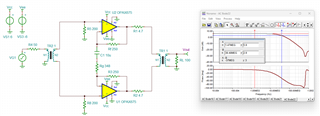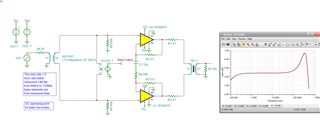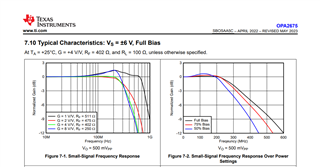Other Parts Discussed in Thread: OPA2677, TINA-TI, THS6222, OPA2673
Hello,
I am going to drive a 100 Ohm twisted pair line. The input p-p voltage is around 100mV and I would like to amplify it am much as possible to keep the 100 MHZ bandwidth. Could you help me to adjust the passive values? I tried to follow the datasheet recomendations but it seems a bit different. I also tried to convert the single input to differential but TIAN gave me errors!
Tahnk you







